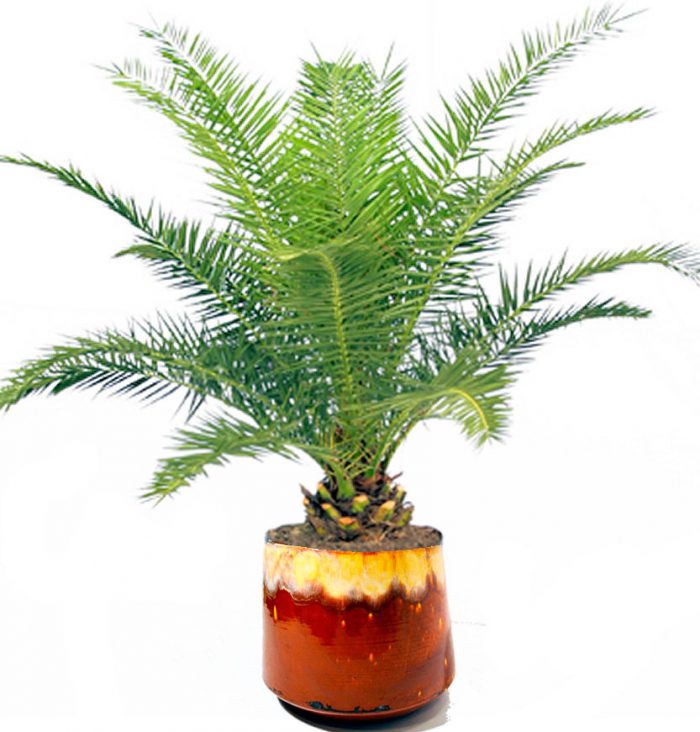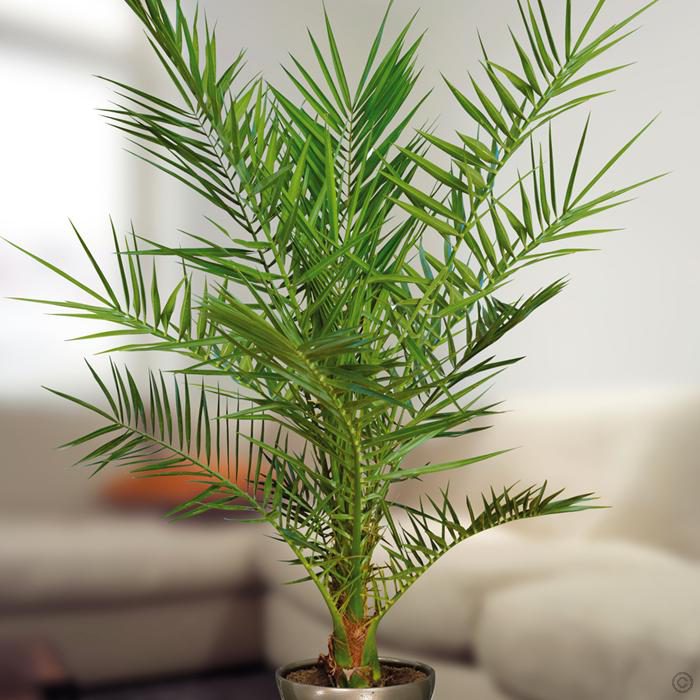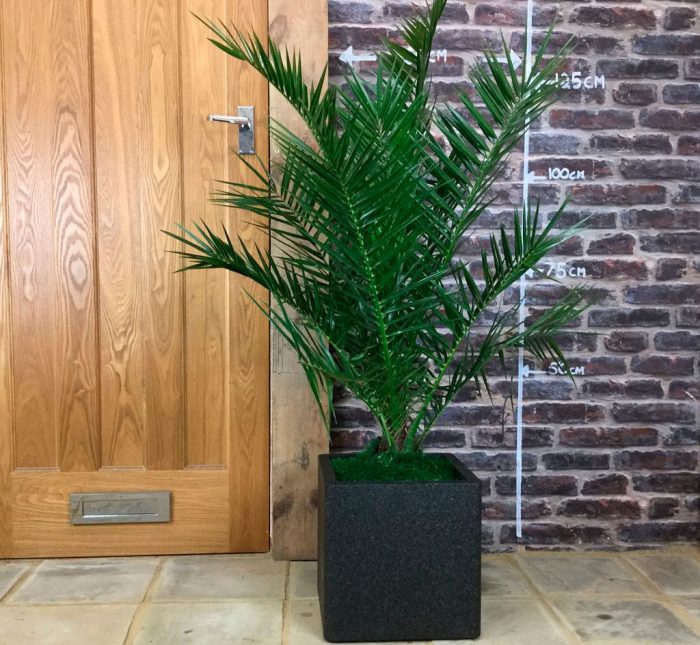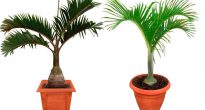Canary date Canary date palm (Phoenix canariensis) is also called. This plant belongs to the genus dates and to the palm family (Palmaceae). In nature, they can be found in the rocky regions of the Canary Islands.
This palm is quite large. So, in height, it can reach 18 meters, while the width of its trunk will be equal to 1 meter. The unbranched straight trunk is quite strong. There are many stumps on its surface, which are the remains of dead and fallen leaves. The leaves are found only at the top of the palm, and there are from 150 to 200 pieces. Short-petiolate leaves in length can reach from 4 to 6 meters. Greenish-gray compound-pinnate leaves consist of tough narrow leaves, which number from 80 to 100 pieces.
The flowers are divided into female (yellow-orange) and male (cream). They are collected in rather large branched axillary inflorescences, while the female inflorescences can reach 200 centimeters in length. Small (about 2 centimeters long) oval-shaped fruits are colored orange. Each fruit contains one large seed.
Content
Caring for Canarian dates at home
To grow the Canary date at home, you need to know a few rules for caring for it.
Illumination
Loves sunlight. The plant needs direct sunlight throughout the year. It is recommended to place the palm tree in the immediate vicinity of a south-facing window. In the summertime, it can be transferred to fresh air (to the balcony, to the garden).
In autumn and winter, it is necessary to illuminate the palm tree with special phytolamps, while the daylight hours should be at least 10 hours.
In order for the crown to be beautiful, you need to regularly rotate the pot little by little around its axis relative to the light source.
Temperature regime
During intensive growth, it is recommended to keep the plant at a temperature of 22 to 25 degrees. The plant will feel quite comfortable at a higher temperature, but if at the same time there is low air humidity, the tips of the leaves will begin to dry. In winter, it is recommended to move the palm to a cooler place between 16 and 18 degrees.
Airing
Such a date needs a regular supply of fresh air. It reacts favorably to a light breeze, therefore it is recommended to create a not very large draft in the room where the Canary date is located.However, in winter you need to be careful that there are no sudden temperature changes in the room during airing.
How to water
During the period of active growth, watering should be abundant, while it is done after the upper layer of the substrate dries slightly. Overflow for the date is undesirable. If the liquid stagnates in the soil, then the young leaves will turn pale and become soft. The plant also reacts negatively to dry soil. If watering is scarce, the leaves will begin to droop and their position will not recover over time.
For irrigation, use soft settled water, which contains a small amount of potassium.
In winter, they water a little less.
Air humidity
Requires high humidity (approximately 50 percent). In this regard, the plant needs systematic spraying, especially during warm wintering, when the air in the room is dried by heating devices. It is recommended to place a small fountain or aquarium in the immediate vicinity of the palm tree.
Earth mix
For planting, a ready-made earthen mixture for palm trees, which is sold in a flower shop, is suitable, but experts recommend adding a small amount of large baking powder to it. To prepare the soil mixture with your own hands, you need to combine humus, sod and compost soil, as well as coarse sand, which should be taken in equal parts.
Don't forget to make a thick drainage layer at the bottom of the container. For this, you can use expanded clay.
Fertilizer
During the period of intensive growth, feeding is carried out 1 time in 2 weeks, and in winter - 1 time in 4 weeks. For this, liquid complex mineral fertilizer is alternated with organic one.
Transplant features
Young plants are transplanted once a year, and adult specimens are transplanted a little less often - once every 3 or 4 years. If the plant is of impressive size, then it is recommended to replace the topsoil with a new one once a year.
During transplantation, it must be borne in mind that the older the plant is, the heavier the soil it needs. To make the soil heavier, clay-sod land is used.
Reproduction methods
You can propagate it indoors with fresh seeds. If you have a date that has not been cooked, then its extracted bone is also suitable for planting.
Seedlings appear 2–3 months after sowing. Seedlings are distinguished by their very slow growth, so the first complex-pinnate leaves will grow only at 4 or even 5 years of life.
Diseases and pests
The plant can settle spider mites, scabbards or mealybugs... If pests are found, they must be treated with an appropriate chemical agent.
A date can get sick due to improper care:
- yellowing of foliage - poor watering;
- the appearance of spots on the surface of the leaves - due to abundant watering or sudden changes in temperature;
- darkening and dropping of the lower leaves - natural process of growth and development;
- the tips of the leaves dry - low air humidity;
- the leaves are dark and there are signs of rot - due to overflow (if the roots become black at the same time, the plant will die).
Purchase features
In the event that you decide to buy such a date in the store, then do not do it in the winter. The fact is that due to a sharp change in temperature (when the plant is transferred to the street, and then again to the room), all the leaves can die off.














